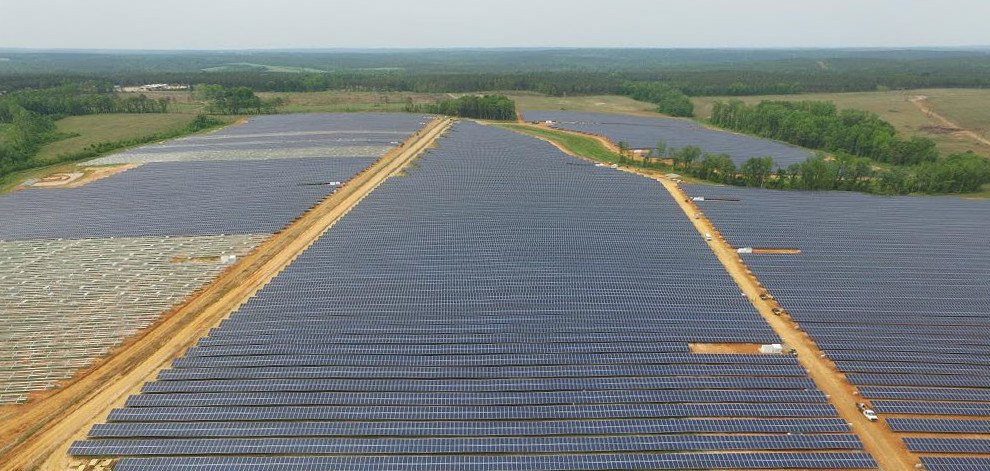As a reporter, you know layoffs are serious when your press contact disappears overnight. This week Cypress Creek announced a restructuring, including layoffs, which Greentech Media put at 20% of its workforce. The company has declined to either verify or correct this number.
This comes only one week after Cypress Creek announced that it would sell 580 MW of projects in four states to British infrastructure company Cubico Investments. At the time Cypress Creek presented this as a normal part of its development business, despite the fact that only one of the projects had reached financial close.
It turns out that there may have been more to the story, but the press contact who gave us this explanation is no longer working at Cypress Creek. And while the developer has blamed “volatile costs for solar panels and steel” as well as tax changes and rising interest rates, these have affected every developer and construction contractor in the industry.
Instead, the Public Regulatory Policies Act of 1978 (PURPA) may hold the key to the company’s downturn.
The PURPA boom and bust
PURPA has emerged in recent years as a driver for large-scale renewable energy, particularly in states that do not have strong renewable energy mandates and had not previously built much solar.
The law creates a system of standard contracts which can apply to wind and solar projects, with prices based on a utility’s projection of what it would otherwise pay for power. PURPA supplies many of the basics that developers need to access financing, including predictable pricing under long-term contracts.
And as large-scale solar became cheap enough to access PURPA, this led booming solar markets in a number of states, including North Carolina and Utah, but also big pipelines of projects in states like Michigan.
And every time we at pv magazine saw a PURPA boom, one company was always present: Cypress Creek. When Michigan regulators halted reforms to PURPA at the end of 2017, Cypress Creek noted that it had 700 MW of projects in the state, and planned to invest $3 billion.
But in state after state utilities fiercely resisted having to buy power from renewables under PURPA, and regulators – who typically do not see rapid decarbonization as part of their job – were uncomfortable with the rapid change. This led to changes to state-level implementation of the law, including suspensions of the policy, gutting of contract lengths and slashing of rates – all of which undermined the main benefits of the policy.
In 2018 PURPA crashed as a driver of utility-scale solar. Wood Mackenzie Power & Renewables estimates that 1.7 GW of solar was put online through PURPA in 2016 and 1.6 GW in 2017, but only 300 MW in 2018.
Cypress Creek Executive VP of Development Noah Hyte notes that PURPA “fueled the company’s growth” in 2016 and 2017, and that changes to the policy “played a role” in driving the company’s restructuring. However, he says that there were “a number of contributing factors”.
North Carolina slows down
Compared to other states the policy changes were less dramatic in North Carolina, which was Cypress Creek’s largest market and which has been the largest market for PURPA projects to date. Cypress Creek and developer Strata Solar were part of a negotiated deal with Duke Energy which was enacted into law in the summer of 2017, and which moved much of the state’s market to a competitive procurement model.
And while the North Carolina solar market was still the nation’s second-largest in 2017, implementation of the new policy was followed by a marked slowdown in installations, which was notable in state-level data by at least mid-2018.
North Carolina also remains Cypress Creek’s largest market, and while the company has maintained that it has no intention of leaving the market, it is clear that under the new system there is simply not as large of an available market as before.
Community solar
Hyte notes that in addition to being very active in PURPA markets, Cypress Creek has also been very active in community solar. Community solar markets have been slower to take off than many had hoped, with what Hyte describes as “significant delays” in Illinois, New York and Massachusetts.
“We are still really excited about community solar, but because of issues with the launch of community solar some of those markets were delayed,” explains Hyte.
However, company officials also note that Cypress Creek is active in wholesale power markets as well, and note that going forward the company is bullish about the possibilities in various wholesale power markets as well as community solar and other state-specific opportunities.
Update: This article was changed at 10:15 AM EST on January 31 to reflect comments by Cypress Creek Renewables.
This content is protected by copyright and may not be reused. If you want to cooperate with us and would like to reuse some of our content, please contact: editors@pv-magazine.com.









Cypress Creek over expanded, increased it’s work force that out striped it’s cash flow capabilities. When you need cash, you sell assets. Not sure how much cash they have deployed in MA, IL, MI, But its more money than you can fit in a bread box! The issue they face is not turning these projects over fast enough.